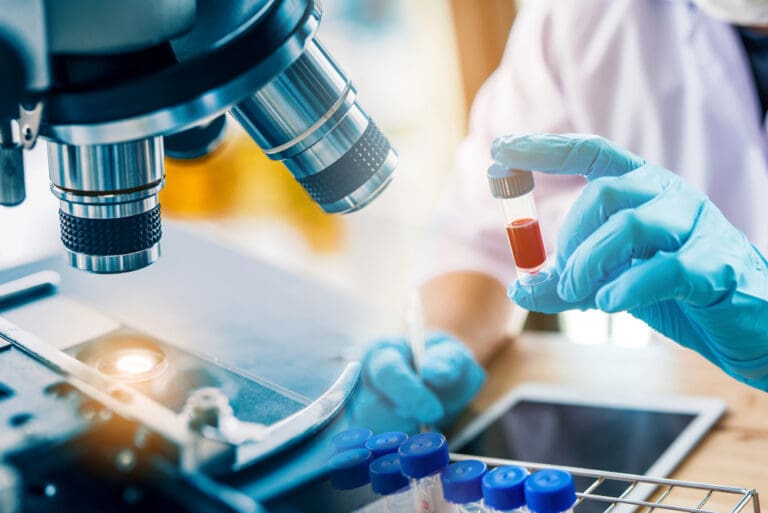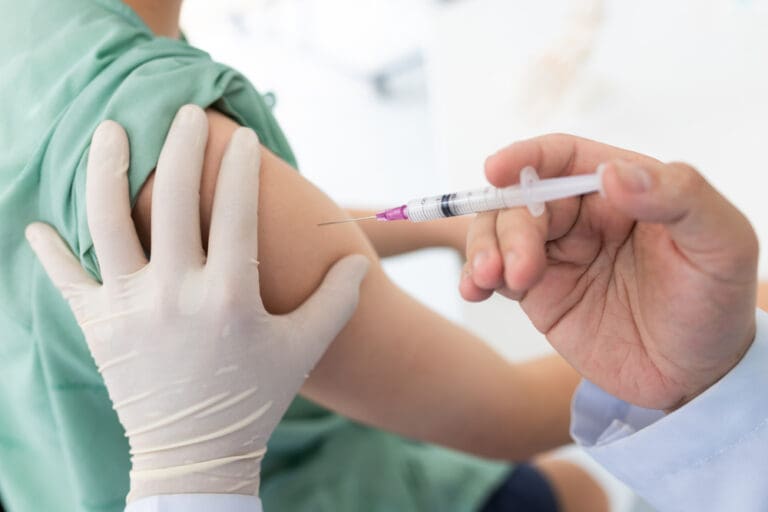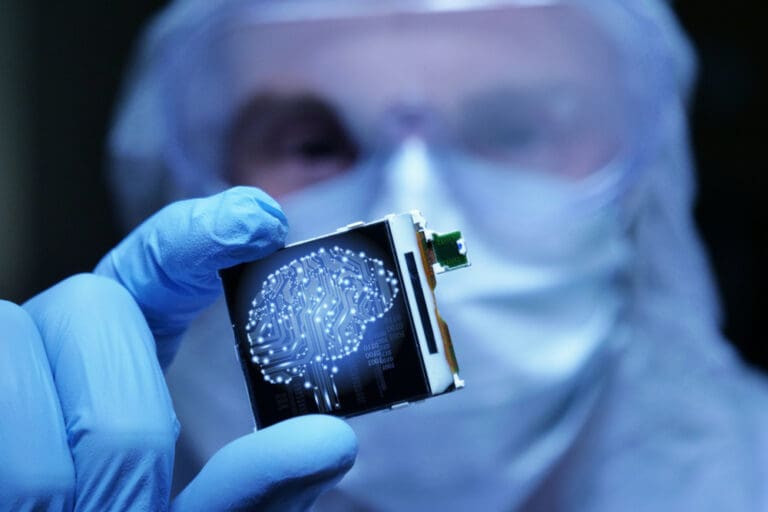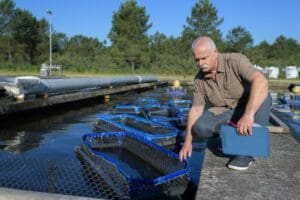It is a constant cry from healthcare providers around the world – the insatiable appetite for blood.
According to the American Red Cross, it is estimated someone needs a blood transfusion once every two seconds in the US. And it’s a demand replicated globally.
In addition, pharmaceutical companies are in regular need of blood plasma in order for the products they market.
Yet it all relies on a steady stream of people volunteering to give blood to ensure supplies are kept at sufficient levels.
All too often, demand outstrips supply.
It is not helped by the short shelf-life of blood – generally less than 48 hours.
But what if we could manufacture blood in a laboratory? It could produce a potentially never-ending supply and ease the demand requirements.

At the end of 2022, red blood cells grown in a laboratory were transfused into another person in a world first clinical trial.
Taking place in the UK, the manufactured blood cells were grown from stem cells from donors. The red cells were then transfused into volunteers in the RESTORE randomised controlled clinical trial.
The trial is a joint research initiative by NHS Blood and Transplant and the University of Bristol, working with the University of Cambridge, Guy’s and St Thomas’ NHS Foundation Trust, National Institute for Health and Care Research (NIHR) Cambridge Clinical Research Facility, and Cambridge University Hospitals NHS Foundation Trust. It is part-funded by a NIHR grant.
The trial is the first step towards making lab grown red blood cells available as a future clinical product.
Chief Investigator Professor Cedric Ghevaert, professor in transfusion medicine and consultant haematologist at the University of Cambridge and NHSBT, said:
“We hope our lab grown red blood cells will last longer than those that come from blood donors.
“If our trial, the first such in the world, is successful, it will mean that patients who currently require regular long-term blood transfusions will need fewer transfusions in future, helping transform their care.”
It was the first time in the world that red blood cells that have been grown in a laboratory have been given to another person as part of a trial into blood transfusion.
Yet widespread use of such breakthroughs are a little way off – although possibly not for long.

According to a report published by Maximize Market Research, the synthetic blood substitutes and blood product market was valued at USD6.48 billion in 2022. It is expected to reach some USD21.28 billion by 2029 – with a CAGR of 18.5%.
Little wonder then that many firms are seeking investment to fuel their R&D while canny investors are looking to invest today in order to capitalise on the promise of tomorrow.
Adds the report: “The prevalence of numerous conditions that require blood transfusions, such as cancer, malignant neoplasm, CVDs, organ transplantations, leukaemia, anaemia, surgery, neonatal condition, and others, are the key drivers of a synthetic blood substitute and blood products in the market.
“The demand for blood transfusions rises as a result of these factors. The necessity to meet supply shortages necessitates raising awareness, and the rising number of diseases transmitted through transfusions is driving up demand for synthetic substitutes.
“Market companies now have a fresh opportunity to introduce artificial blood transfusion advancements due to stem cell therapy.”
But, as it is quick to point out, there are plenty of hurdles before many can come to market.
Adding: “To market the product severe government standards and conditions, regulatory clearances from the Ministry of Public Health, the World Health Organization (WHO), and the Food and Drug Administration (FDA) are required. And this procedure is thought to be a market restraint because it takes longer for government approvals.”
So just what exactly are artificial or synthetic blood substitutes?
In short, they are substances designed to mimic some or all of the functions of natural blood. They are primarily developed to serve as a replacement for real blood in situations where immediate blood transfusions may not be available or when traditional blood transfusions are not feasible or suitable.
Their main purpose is to carry and deliver oxygen to the body’s tissues, just like natural blood does. They are typically made up of different components, depending on the specific type of blood substitute.

There are two main categories and neither are particularly new – both having been worked on and refined over the last 30 years. The difference now, though, is that technological and scientific breakthroughs are making artificial blood a reality.
The first are oxygen-carrying solutions: These are composed of molecules that have the ability to bind and transport oxygen. They work by chemically binding oxygen to their structure, allowing them to carry it throughout the body. When these solutions are infused into the bloodstream, they can release oxygen to the tissues that need it.
The other are haemoglobin-based oxygen carriers (HBOCs). Derived from human or animal haemoglobin, the protein responsible for carrying oxygen in red blood cells, they are designed to be stable and can either be modified or encapsulated to prevent the breakdown of haemoglobin outside the red blood cells. They can also deliver oxygen to tissues in need.
However, currently neither are intended to replace real blood. Both have limitations and potential risks and both are subject to extensive on-going research.
Which is where a new breed of firms have sprung up to take the evolution of blood replication on a step.
Maryland-based KaloCyte was founded seven years ago with the aim of developing an innovative artificial red blood cell to meet the critical need.
Its focus is on the development of ErythroMer, a dried, bio-inspired artificial red blood cell, which has the potential “to transform how we currently treat patients who need transfusion when stored red blood cells are not an option”.
The company is backed by over USD10 million in investor and federal grant funding.

Canadian firm Membio uses biomanufacturing to produce pathogen-free blood which, it claims, is highly compatible with all blood types.
Explains founder Shane Kilpatrick: “Researchers have been manufacturing blood in the lab for the last few decades, but they haven’t been able to produce blood cost effectively and at the scale that’s needed to offset the need for donations. Our end goal is to replace donation with manufactured blood.”
RedC Biotech is a pre-clinical, development stage company aiming at saving lives worldwide. RedC is developing a new, process, to create universal red blood cells from stem cells.
The privately-held Israeli firm is current working with leading industry, academia and government organisations in pursuit of its goal.
It adds: “The universal red blood cells provided by RedC will be a blood type that is suitable for almost every patient and will have the same potency as the currently used red blood cell transfusion.”
CONCLUSION:
To produce something from the laboratory which solves the age-old problem of blood supplies for those in need, would clearly solve one of the world’s key needs. The hurdles firms in the sector must leap, however, to secure the regulatory approvals required to take a product to the mass market are considerable. Few would bet against them being successful, eventually, but investors may be wise in looking at it as a long-term option rather than a quick win.
COMPANIES TO WATCH:
KaloCyte, Membio, RedC Biotech, NHS Blood and Transplant, University of Bristol













